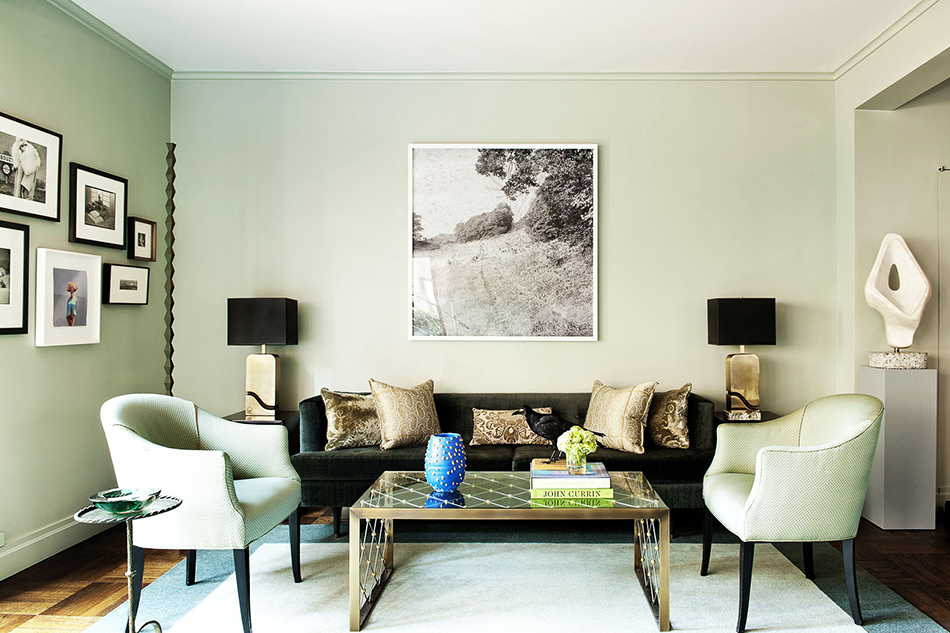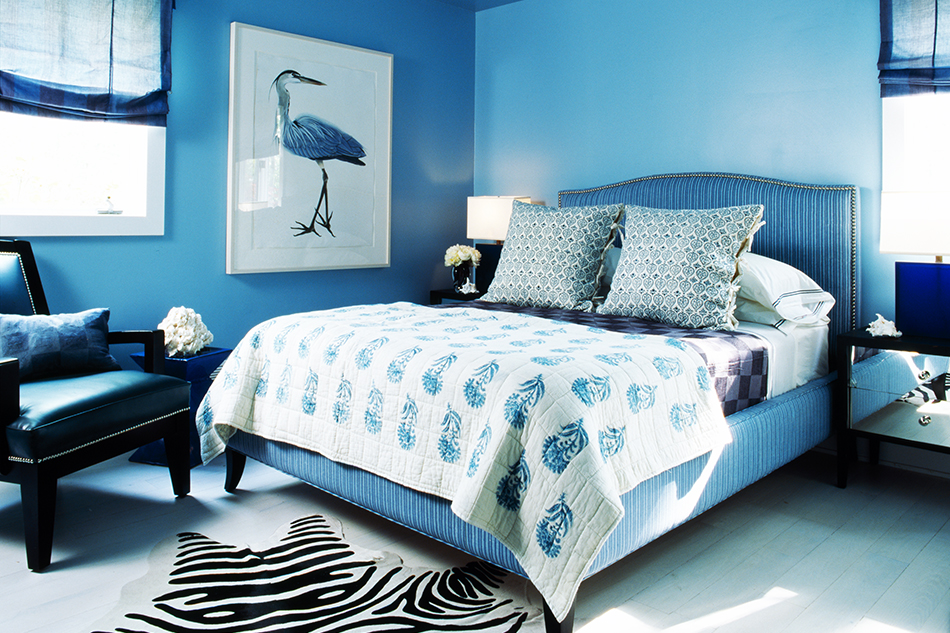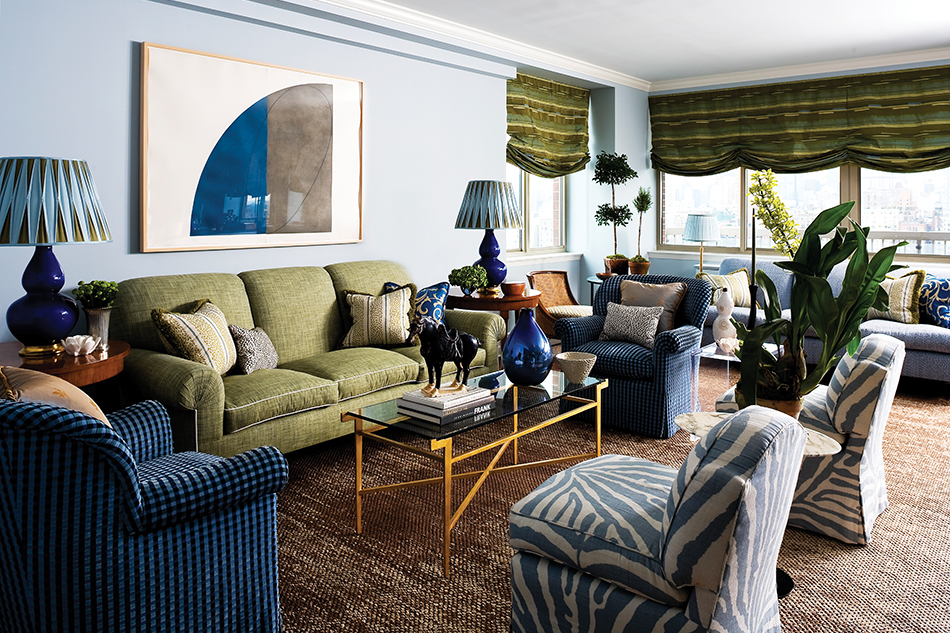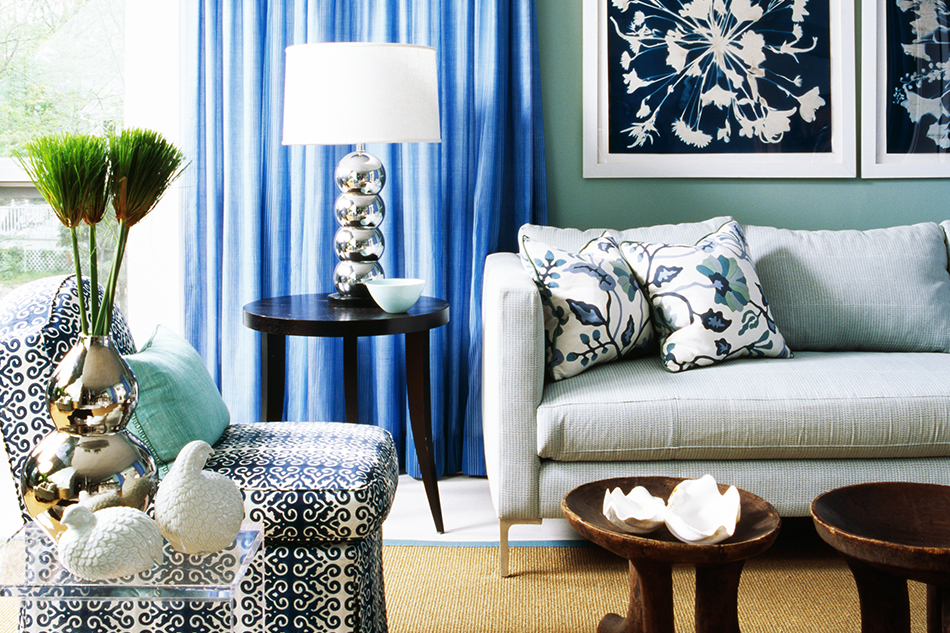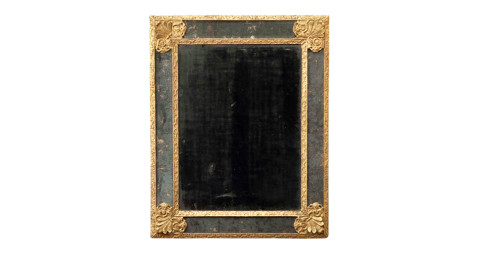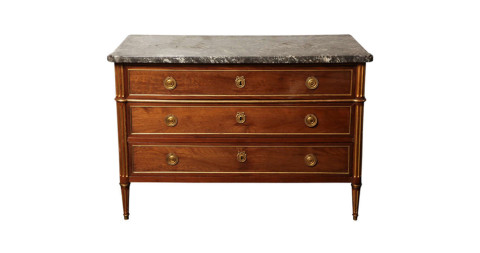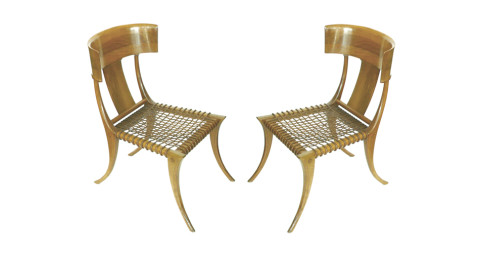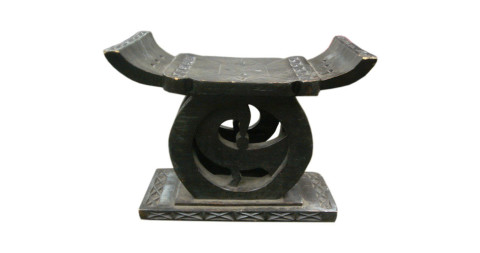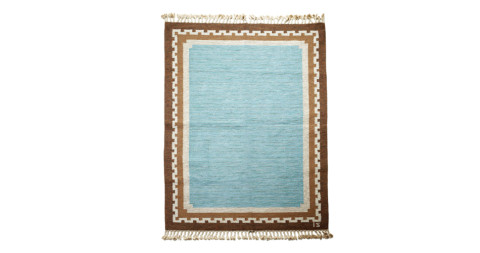
September 18, 2013Top: For a New York apartment with Hudson River views, Todd Black employed rich, masculine tones and a deliberate mix of materials, including metal, stone and leather. Photo by Bruce Buck
There may be some people who go to the Metropolitan Museum of Art on a Friday night to listen to classical music and drink white wine, but Todd Black is not one of them. Dressed in shorts, a polo shirt and sneakers on a recent warm evening, the tall and trim interior designer marches through the Great Hall of New York City’s Fifth Avenue landmark at a fast clip, weaving past couples holding hands and dodging families gawking at Greek statues. “I know a short cut,” he says, hurrying left and then right through narrow passages until we are standing in a dimly lit room deep in the museum’s Wrightsman Galleries for French decorative arts.
Ipractically lived here during graduate school,” he says, peering at a Louis XIV–era bed with a massive baldachin. “Have you ever seen such a thing?” Black studied the history of decorative art through a Parsons program at the Cooper-Hewitt, a few blocks north of the Met, but much of his education was outside the classroom. “They encouraged us to go to auctions and antiques stores to touch things and look at them up close,” he says. “And, of course, to come to the Met.”
It was in the Wrightsman rooms, in particular, that Black developed the passion that shapes both the way he designs and also how he looks at life. “You can really understand a lot about a person and a culture by looking at their furniture,” he says.

For Veronica Webb’s riad-style home in Key West, which appeared in the March 2009 of Architectural Digest, Black combined bone-inlaid chairs that he had custom-made in India with a Murano chandelier and furniture from Egypt, Syria and, naturally, Morocco. Photo by Ken Hayden; courtesy of Conde Nast/Architectural Digest
As it turns out, you can also come to understand a lot about an interior designer by the furniture he choses for his clients and, even more significant, how he selects it. Although Black loves early French pieces, he rarely includes them in his designs. “First of all, it’s incredibly rare and expensive,” he says. “But it’s also not easy to just work into somebody’s home. I think it’s important to find stuff that people both love and use.” And while he may not incorporate it in his everyday work, Black likes to point out that his obsession with early European design helped teach him how to embrace his clients’ tastes — be it mid-century modern or high English country cottage. “I thought French furniture was ugly when I first started out. Over the top. But when I learned the history and came to understand how it was used, I began to appreciate the artisanship and the culture it expressed.” That’s a lesson, he suggests, that can be applied to any style or era.
It has also shaped his appreciation for technique across the board. “I believe it is my job to understand craftsmanship,” he says. “Fabrics can be changed, but good construction defines how a piece looks now and will look in the future.”
Black’s firm, T W Black, Inc., which he established in 2001, is based in Manhattan but oversees projects around the country, which have been featured in Architectural Digest, House Beautiful, House & Garden and the New York Times, among other publications. It recently completed the renovation of a classic six on Park Avenue and is currently at work on a farmhouse-style new-build in Vermont.
His designs have an eclectic elegance that’s difficult to categorize: A few years ago Black created a Moroccan palace on a canal in Key West for the model Veronica Webb, sourcing furniture and tiles from all over North Africa as well as India. The effect was gloriously thematic but also comfortable. For a young New York City couple who recently bought a vacation house in Southampton, meanwhile, Black mixed furniture and fabrics from multiple periods and styles — mostly American — and transformed a generic developer’s special into a personality-filled home. “I suppose it would be easier for me if I had one style that I just delivered to everyone,” he says. “But that’s not how I like to work.
“You can really understand a lot about a person and a culture by looking at their furniture.”

Black shaped this New York bedroom around wallpaper from the Scottish design studio Timorous Beasties that offers a modern take on the traditional damask pattern. The drawing is by Salvador Dalí. Photo by Billy Cunningham
Stop me if I start to get preachy,” Black says before taking a deep breath. “France rose to prominence in the seventeenth and eighteenth centuries. The interiors of its palaces and chateaux were all about expressing the country’s wealth and power. The king was God incarnate and the furniture was meant to lift up the entire empire.” A well-dressed man in his 50s stops to listen in. “Look at this piece,” the designer goes on, pointing at a bulky André-Charles Boulle armoire with tortoiseshell, ebony, gilt and engraved brass details. “The craftsmanship is phenomenal. It took countless hours to make this one armoire, and it was only possible because artisans like Boulle worked directly for the Crown.” The three of us step in to examine the intricate inlay.
Black grew up in Lancaster, Pennsylvania, and says that even as a child he had a thing for furniture. “One of my best friend’s father was an antiques dealer, and their house was full of amazing pieces. But they were very casual about it. We’d come in wet from swimming and plop down anywhere we wanted. I loved that.” Strolling past a painting of Marie Antoinette (“We’ll come back to her later…”), Black stops at a sitting room ablaze with bronze-gilt chairs and upholstered sofas. “You can see that by the time of Louis XV, things started to get less formal and the furniture and layout resembled what we know today. The pieces are still magnificent, but there is a concentration on comfort and living.” He moves a few rooms down. “Pop forward to the time of Napoleon III, and the scale of everything had gotten smaller and the shapes more classical. You could put any of these chairs in a New York City apartment.”
Moving through the rooms, Black doesn’t spend too long fixating on a single object, instead focusing on the whole — an approach he says he brings to his own designs. “For the home in Vermont, for example, we are working on creating the essence of a farmhouse, not an exact replica. Instead we’re combining elements from a lot of places to achieve an idea, or a feel, of a time and place.”

Black sought to endow a downtown Manhattan loft with a sense of lightness and airiness but without an “antiseptic” feeling, as he put it. He sourced the Paul Frankl table from 1stdibs dealer Paul Donzella. Photo by Billy Cunningham
Black’s willingness to learn as he goes is a charming and disarming quality in the opinion-filled world of interior design. “Watching him work is really amazing,” says Sandra Ballentine, a design writer for such titles as the New York Times and Vogue, who is one of Black’s best friends. “He’s so talented and knowledgeable, but he also makes the process fun. You never feel like it’s work or that he takes himself too seriously. He’s really down to earth.” That’s not to say Black is any sort of pushover. Recently he helped Ballentine redo her penthouse in the Murray Hill section of Manhattan. “Often it seemed his only job was to say ‘no’ to me,” she remarks with a laugh.
After we finish with the Wrightsman Galleries, we stroll across the channel to England and then down to Italy before we find ourselves in the American Wing, in a room designed by Frank Lloyd Wright. Black becomes uncharacteristically silent. “We don’t have to stay here long,” he says. “I’m not crazy about this. I just don’t get it.”
Then, after a while, he begins talking: about the influences that shaped Wright’s designs, about why the American public was eager at the time for a radically different aesthetic, about how Wright was so attuned to landscape. It’s as if Black is willing himself to love this design as well — or at least open himself up to it. His curiosity is so contagious that, for the umpteenth time in our tour, I find myself reexamining my own preconceptions about a style.
I also find myself talking — just as eagerly as Black, perhaps even more so. And I realize that throughout our walk, Black had encouraged me to talk about which pieces moved me and about how I use each room in my home. In addition to looking at silk-upholstered fauteuils and polished highboys, Black had been observing me. “There are clients who come to us and really want nothing to do with decorating,” Black explains as we leave the Met. “They say, ‘Do what you want with it, and send me the bills.’ Then there are others who have opinions about every little thing. What I want most for both types is that the finished space be about them.”

